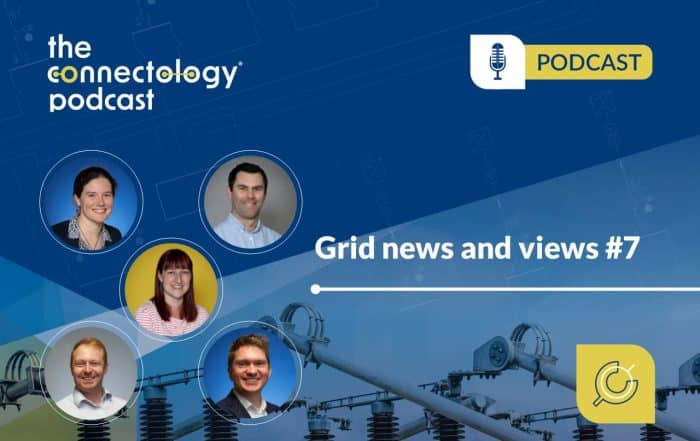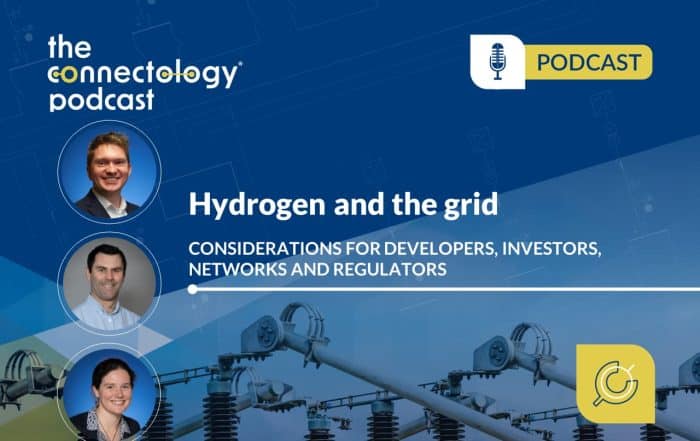What is soft intertrip?
Where electricity networks are constrained the network operator can implement an intertrip. This is when a circuit breaker is opened, and a trip signal is sent via a direct communication path to generators to switch off output. A soft (or software-driven) intertrip is where intertripping is done in the software of the network control system.
Article by Pete Aston – acknowledged expert in networks
Pete joined Roadnight Taylor from Western Power Distribution, the UK’s largest DNO, where he was Primary System Design Manager. He led a team of sixty responsible for all connections and reinforcement of the extra high voltage network and oversight of the roll out of active network management across all four of WPD’s licence areas.
27 September, 2022

In order to connect customers to the network, network companies have a number of tools in their network design toolbox. This includes network reinforcement and Active Network Management. Another of those tools is intertripping, which has been used for decades to help manage the network. A more recent modification of the standard intertrip is the soft intertrip, which is being used to help connect customers faster and cheaper, as this article explains.
Standard intertrip
Electrical networks are made up of circuits connected by circuit breakers (see our article ‘Electricity transmission & distribution networks for newbies’ for more background). Some circuit breakers are normally open, so that electricity can’t flow through it, whereas other circuit breakers are normally closed. If the status of a circuit breaker is changed from open to closed, or from closed to open, it will change the way the power flows through a network.
Let’s now consider the connection of a new generator to the network. In the normal network configuration, it is assessed by the network engineer that there will be no overloads. However, if a particular circuit is switched out (by opening a circuit breaker), it is assessed that there will be an overload with the generator exporting power.
The network engineer has a few options to resolve the issue. One option is to reinforce the circuit that is assessed to get overloaded (for example by replacing it with a circuit with a higher rating). This can be expensive and time consuming, and in some circumstances can be practically very difficult (due to the terrain, or landowners unwilling to route the circuit through their land, or planning permission, etc).
An alternative option for the network engineer is to implement an intertrip. In this scenario, when a circuit breaker is opened, a trip signal can be sent to the new generator, so that the output from the generator is immediately switched off. In this way, there is only an overload on the circuit for a fraction of a second, before the intertrip scheme operates.
This is called an intertrip, because the change in status of one circuit breaker leads to a trip of the generator circuit breaker. This is easy to do if the generator is in the same location as the network circuit breaker that is being monitored (i.e. if they are in the same substation), but often the circuit breaker is a large distance away from the generator. In these circumstances, making an intertrip work can be very challenging, because a direct communications path is needed between the two sites. To ensure a high speed of operation, this comms path usually needs to be a copper pilot cable, fibre optic cable, or microwave link. These can be expensive to install, and sometimes not possible at all.
Soft intertrip
And this is where the soft intertrip comes in. Instead of needing a direct communications path between the two sites, the intertripping is done in the software of the network control system, hence the term ‘soft’ (for software-driven). The network circuit breaker is already monitored and controlled by the network control system, and the generator site is also going to be monitored and controlled by the network control system.
So, with a soft intertrip, a small piece of computer code is written for the network control system, that says the generator should be tripped off when the circuit breaker opens. This removes the need for a direct communication circuit between the generator and the circuit breaker, and can lead to a faster and cheaper connection.
Whilst this system sounds good, there are a few issues with it. One is that it is often slower to operate than a standard intertrip. The signal has to get from the circuit breaker to the control system, the code has to work through, and then a signal sent out to the generator, which can be quite slow. Then there is the issue of reliability. As soon as computers are introduced to the mix, reliability can go down. The network control system is generally a very resilient system, with lots of back up, but occasionally it can go wrong, which could result in the intertrip not working and the circuit being overloaded. Then there is the issue of the network control system having to deal with lots of soft intertrips for lots of parts of the network, and managing that is a complex job, with the need for policies and procedures to ensure overall network resilience is not compromised.
Some network companies are already offering soft intertrips and some aren’t. Some view it as a halfway house to a full ANM system, and so don’t offer soft intertrip, but instead go to a full ANM system (where a graded reduction in output is offered rather than a simple on-off offered by a soft intertrip), which have built-in checks to ensure networks aren’t overloaded.
Contact us
Roadnight Taylor can help to advise on where soft intertrips are available and the pros and cons for your site. To find out more call us on 01993 830571 or send us a message via our contact form.








